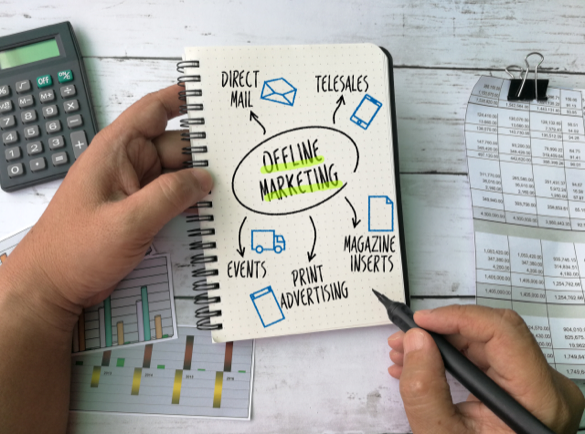
We are living in a world where a six-year-old knows how to operate a smartphone. Now even kids are purchasing online and exercising choices. Readily available information has transformed the traditional dictatorship of the consumer world into a more autonomous one. Undeniably, now we have an overload of information. Branches within branches and segments within segments of different layers of information are accessible at the ease of a click.
This information revolution has changed the entire landscape of marketing. But marketers faced a challenge to produce these many layers of information. Therefore, they let the consumer make these layers on their own through customization. It gave birth to extensive personalization.
With the advent of marketing analytics and AI, it has transformed into hyper-personalization. It is an extreme level of personalization at an individual level. Marketers design offerings to precisely meet customers’ needs, expectations, and preferences. The scope of hyper-personalization is very narrow, where every individual customer receives tailor-made offerings to suffice their demand.
If you are pondering why you should incorporate hyper-personalization in your marketing strategy, you have come to the right place. This article mentions three reasons why hyper-marketing is the future of marketing.
1. Diversifying portfolio of academia/increasing inclination toward personalization in academia
There was a time when there was just an MBA specialization in marketing. Now you have at least a dozen more subfields within marketing. Just go through any AACSB online MBA no GMAT requirement program and see the various options yourself. The diverse portfolio will undoubtedly surprise you as it consists of marketing media sciences, brand management, and whatnot. Indeed, these graduates will become future practitioners in the corporate world.
Increasing subject variety widens the market coverage. Every academic marketing field aims to understand customer behavior at a more individual level. Tools like consumer surveys, in-depth interviews, questionnaires, and focus group discussions all revolve around understanding the customer at a more personal level.
When these learnings transform into reality, they give rise to modern-day marketing gimmicks like hyper-personalization. We can only forecast progress in academia through the same lines. Therefore, the future of marketing will only embrace further personalization.
2. Changing consumption patterns
The world is progressing. More and more middle and lower-middle-income families are entering the upper quartiles of the income range. People will have more disposable income as we move ahead in the future. According to Brookings, the middle class is already the largest segment of the global economy. There will be 5.3 billion people in the middle class by 2030. The collective market size of the middle class in the USA, China, and India will stand at a whopping $42.3 trillion by 2030.
These people are mainly value seekers and the things that suit their personalized needs best drive the most value for them. Therefore, hyper-personalization is the most responsive tool to cater to the needs of this vast segment. As Accenture quotes, 75% of global consumers prefer purchasing from brands with personalized offerings as per individual preferences. Now we know very well that a massive chunk of that 75% is the middle class.
Moreover, increasing competition and new players in the global market have thrown innumerable options into the market. It provides an implicit surety that one or the other market player will eventually meet the customer’s individual preferences. It has undoubtedly changed the consumption patterns of modern-day consumers.
3. The rising role of IT in marketing
It is indeed true that hyper-personalization is the brainchild of Artificial Intelligence (AI) and Data Analytics. Hyper-personalization is only possible by leveraging machine learning and utilizing real-time data collected from potential customers through AI and data analytics. According to New York Times, you have barely 8 seconds to capture the attention of your potential customer. Now you have to capture, sort, analyze, and interpret customer data within that period. Only then can you produce the most befitting personalized offering.
It is humanly impossible. Fortunately, AI and data analytics deploy advanced algorithms to manage this data-driven customer interaction. It has gradually created an entirely new marketing domain, i.e., marketing analytics. According to a report by Grand View Research, the global market size of marketing analytics will reach about $7.43 billion by 2027 at a CAGR of 14.8%. Therefore, we can only expect a further increase in hyper-personalization in the upcoming marketing norms.
According to Statista, there are currently 3.8 billion smartphone users in the world. It means the best medium of customer interaction is a smartphone. You can only gain a high level of hyper-personalization in your marketing strategy by tapping into each customer touchpoint. Now that might include utilizing AI and data analytics or search engine optimization and content marketing. It would help if you integrated suitable IT applications for a wider customer reach.
Final Thoughts
We have seen how famous giants like Nokia and Kodak failed miserably. We have also seen how relatively recent launches like Amazon and Spotify have gained massive success in the market. If you scrutinize closely, you will realize that the personalized marketing approach has mainly made this difference. Those who have mastered it enjoy tremendous market success. At the same time, consumer markets have wiped out the ones who got late in adjusting their marketing strategies accordingly. So you must analyze your business and adopt a hyper-personalized marketing strategy because it is the future.


